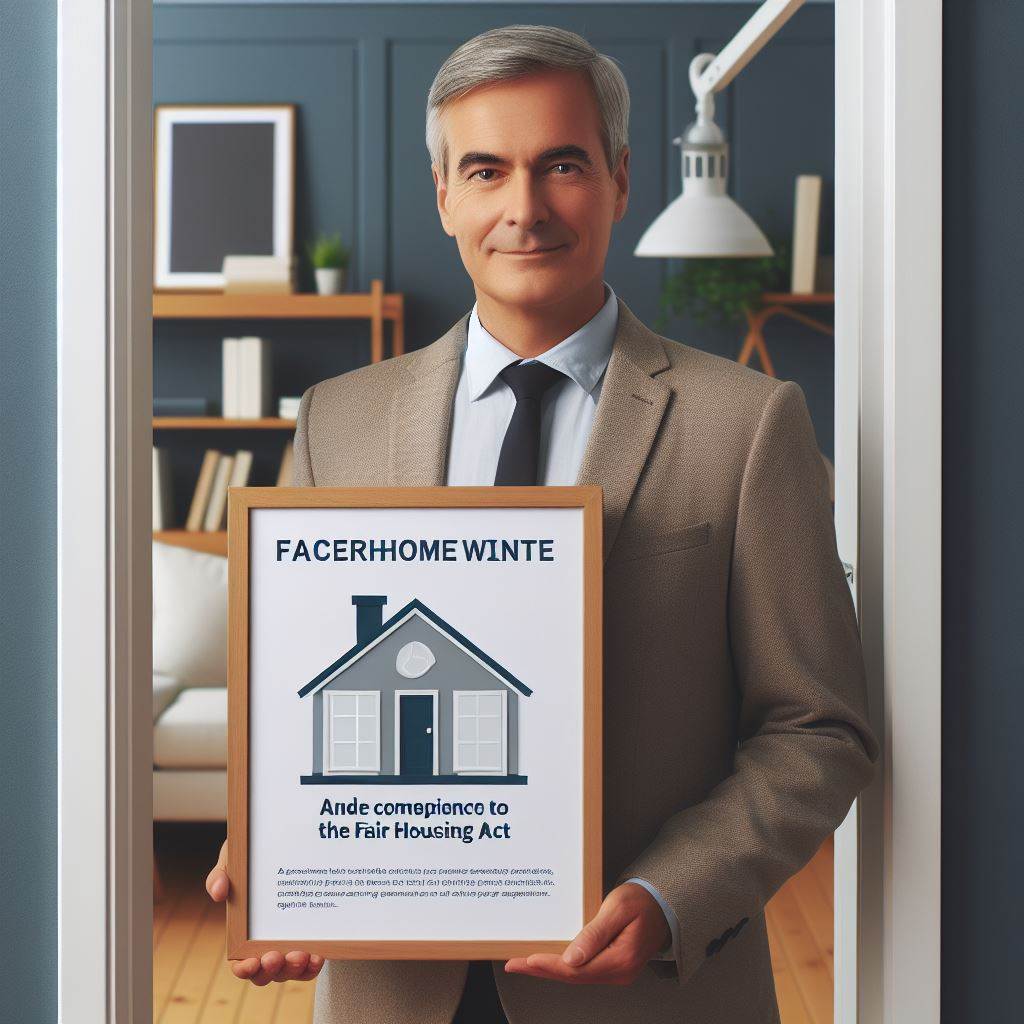Introduction
Tenant safety laws are crucial for ensuring the well-being and protection of individuals living in rental properties.
These laws establish guidelines that landlords must comply with to maintain a safe living environment for tenants.
Failure to meet these regulations can result in severe legal consequences for landlords.
Tenant safety laws play a vital role in safeguarding the rights and lives of tenants.
These laws establish minimum standards for housing conditions, fire safety, structural integrity, and other essential aspects of rental properties.
By adhering to these laws, landlords can create a safe and secure environment for their tenants.
Failure to comply with tenant safety laws can lead to significant legal ramifications for landlords.
They may face fines, penalties, or even legal action from tenants if they neglect their responsibilities in ensuring a safe living space.
Additionally, non-compliant landlords risk damaging their reputation and facing difficulties in attracting future tenants.
In fact, tenant safety laws are necessary to protect the well-being of individuals residing in rental properties.
By following these laws, landlords can uphold their responsibilities and provide a secure environment for tenants.
Failing to comply with these regulations can result in serious legal consequences that can negatively impact landlords both financially and with their reputation.
It is crucial for landlords to understand and abide by tenant safety laws to ensure the welfare of their tenants and their own legal protection.
Overview of tenant safety laws
When it comes to renting out properties, ensuring the safety of your tenants is of utmost importance.
Tenant safety laws play a vital role in ensuring the well-being of tenants and protecting their rights.
It is crucial for landlords to understand these laws and comply with them to create a safe living environment for their tenants.
Tenant safety laws are regulations put in place to protect tenants from potential hazards and ensure their safety while residing in a rented property.
These laws cover various aspects of safety, including fire safety, carbon monoxide detection, building maintenance, and security measures.
What Are Tenant Safety Laws?
Tenant safety laws are legal requirements that landlords must follow to ensure the safety and well-being of their tenants.
These laws establish specific guidelines and standards that should be met in rental properties to minimize potential risks and hazards.
Differentiating Federal and State-Specific Laws
Tenant safety laws can vary between states, as well as at the federal level.
Federal laws, such as the Fair Housing Act and the Americans with Disabilities Act, are applicable to rental properties across the country.
State-specific laws, on the other hand, may address additional safety requirements or specific local concerns.
The Need for Adhering to Both Sets of Laws
For landlords operating in multiple states, it is necessary to adhere to both federal and state-specific tenant safety laws.
While federal laws establish the baseline for safety, state laws may impose stricter requirements.
Landlords must ensure compliance with both sets of laws to protect their tenants and avoid legal consequences.
Non-compliance with tenant safety laws can result in severe penalties, property inspections, and even lawsuits.
Ignoring these regulations not only puts tenants at risk but also exposes landlords to significant financial and legal liabilities.
Key Safety Measures Required by Tenant Safety Laws
To meet the requirements of tenant safety laws, landlords should prioritize the following measures:
- Fire Safety: Install smoke detectors and fire extinguishers in the property, regularly inspect electrical systems, and provide clear evacuation plans.
- Carbon Monoxide Detection: Install carbon monoxide detectors in properties with potential sources of carbon monoxide, such as gas appliances or attached garages.
- Building Maintenance: Ensure the property is well-maintained, performing regular inspections, addressing repair requests promptly, and keeping common areas clean and hazard-free.
- Security Measures: Take necessary steps to enhance the security of the property, such as installing secure locks, adequate lighting, and surveillance systems.
Tenant safety laws are designed to protect the welfare of tenants and create a safe living environment.
Landlords must familiarize themselves with both federal and state-specific laws to ensure compliance.
Prioritizing safety measures can prevent accidents, protect tenants, and avoid legal issues.
By adhering to tenant safety laws, landlords demonstrate their commitment to providing a secure and hazard-free rental experience.
Read: Subletting: Laws Landlords Should Know
Key Provisions of Tenant Safety Laws
In order to protect the well-being of tenants and ensure their safety, several key provisions are included in tenant safety laws.
These regulations enforce mandatory safety measures, outline building codes and standards, and emphasize the importance of maintaining safe and sanitary conditions.
Mandatory Smoke Detectors and Carbon Monoxide Detectors
One of the primary requirements under tenant safety laws is the installation and maintenance of smoke detectors.
Landlords must provide functioning smoke detectors in rental units to alert tenants in case of fire emergencies.
Additionally, if a rental unit has fuel-fired appliances or an attached garage, landlords must also install carbon monoxide detectors.
Fire Safety Standards
Fire safety standards play a crucial role in ensuring tenant safety.
Landlords are obligated to comply with these standards, which include providing fire extinguishers and clearly marked fire exits in the building.
Regular inspections and maintenance of fire alarm systems are necessary to promptly address any malfunctions or deficiencies.
Building Codes and Standards for Habitability
Compliance with building codes and standards for habitability is another key provision of tenant safety laws.
Rental units must meet the established regulations for structural integrity, ventilation, plumbing, electrical systems, and other essential factors.
This ensures that tenants are living in spaces that meet the necessary safety requirements.
Safe and Sanitary Conditions for Tenants
Maintaining safe and sanitary conditions is a fundamental obligation of landlords.
They are responsible for ensuring proper garbage disposal and pest control to prevent health hazards.
Adequate lighting and secure locks for doors and windows should also be provided to enhance tenant safety.
Importance of Maintaining Common Areas
In addition to individual units, common areas within rental properties must be maintained to prevent accidents or injuries.
Landlords should regularly clean and repair stairways, hallways, and other shared spaces.
It is crucial to install proper lighting and ensure the structural integrity of these areas to minimize the risk of accidents.
In essence, tenant safety laws encompass various provisions to protect tenants and maintain safe living conditions.
Mandatory installation of smoke detectors and carbon monoxide detectors, compliance with fire safety standards, adherence to building codes, and standards for habitability, as well as maintaining safe common areas, are essential aspects of ensuring tenant safety.
Landlords must diligently fulfill their responsibilities to guarantee the well-being of their tenants.
Read: Eviction Notice Rules: Key Landlord Info

Responsibilities of Landlords in Ensuring Tenant Safety
As a landlord, the safety and well-being of your tenants should always be a top priority.
Not only is it ethically crucial, but it’s also legally mandated in many jurisdictions.
Understanding your responsibilities in this regard is essential for fostering a secure living environment for your tenants. Here are some key aspects to consider:
It’s imperative for landlords to comprehend their legal obligations concerning tenant safety.
This includes adhering to building codes, providing adequate security measures, and maintaining a habitable environment free from hazards.
Regular Maintenance and Inspections
Conducting regular inspections and maintenance checks is paramount for identifying and addressing potential safety hazards promptly.
This proactive approach can prevent accidents and ensure that the property remains in compliance with safety regulations.
Background Checks and Screening
Prioritizing tenant screening is a vital step in safeguarding your property and other tenants.
Thorough background checks can help identify any red flags, such as criminal records or past rental issues, that may pose a safety risk to other tenants.
Educating Tenants
Providing tenants with information about safety procedures and emergency protocols is essential.
This includes familiarizing them with fire escape routes, emergency contact information, and any specific safety guidelines relevant to the property.
Prompt Resolution of Maintenance Requests
Responding promptly to maintenance requests related to safety concerns demonstrates a commitment to tenant well-being.
Whether it’s repairing faulty wiring, addressing plumbing issues, or fixing broken locks, timely action can prevent accidents and enhance tenant satisfaction.
In a nutshell, landlords play a crucial role in ensuring the safety of their tenants.
By fulfilling their responsibilities, including regular maintenance, thorough screening, tenant education, and prompt resolution of safety-related issues, landlords can create a secure and conducive living environment for all residents.
Prioritizing tenant safety not only fosters trust and goodwill but also helps mitigate potential legal liabilities.
Therefore, it’s imperative for landlords to remain diligent and proactive in upholding safety standards within their rental properties.
Read: Handling Tenant Complaints Effectively
Legal Implications of Non-Compliance
In the realm of property management, ensuring the safety and well-being of tenants is paramount.
Apart from being a moral obligation, it is also a legal requirement that landlords must adhere to.
Failure to comply with tenant safety laws can have severe repercussions, ranging from legal penalties to irreparable damage to your reputation.
Landlords are legally obligated to provide a safe and habitable living environment for their tenants.
This includes maintaining the property in good repair, ensuring the proper functioning of essential utilities, and addressing potential hazards promptly.
Failure to meet these standards can result in legal action against the landlord.
Possible fines and penalties for violations of tenant safety laws
Depending on the jurisdiction, the fines and penalties for violating tenant safety laws can vary significantly.
These penalties may include monetary fines, citations, and even criminal charges in cases of extreme negligence.
Additionally, landlords may be required to cover the cost of repairs or renovations to bring the property up to code.
Potential civil lawsuits filed by injured tenants
If a tenant is injured due to negligence on the part of the landlord, they may file a civil lawsuit seeking compensation for their injuries.
This can result in significant financial liability for the landlord, including medical expenses, lost wages, and pain and suffering.
Reputation damage and negative impact on future rental prospects
Beyond the immediate legal and financial consequences, non-compliance with tenant safety laws can also damage a landlord’s reputation.
Word spreads quickly in the rental community, and a reputation for neglecting tenant safety can make it difficult to attract new tenants in the future.
Moreover, negative publicity stemming from lawsuits or fines can further tarnish the landlord’s image.
Basically, prioritizing tenant safety is not only a legal obligation but also essential for safeguarding your reputation as a responsible landlord.
By proactively addressing safety concerns and complying with relevant regulations, landlords can protect both their tenants and their own interests in the long run.
Read: Tenant’s Privacy Rights Explained
Best practices for landlords to ensure compliance
As a landlord, it is essential to prioritize tenant safety and comply with the relevant laws and regulations.
By adhering to the best practices outlined below, you can ensure a safe living environment for your tenants.
Research and understand specific tenant safety laws applicable to the rental property
Each jurisdiction may have different laws and regulations when it comes to tenant safety.
It is crucial to research and understand the specific laws and requirements applicable to your rental property.
This research will allow you to implement necessary safety measures and avoid any legal complications or liabilities.
Stay updated with any changes or revisions in the laws
Laws and regulations regarding tenant safety may change over time.
It is essential to stay updated with any revisions or additions to these laws.
Regularly check for updates from relevant authorities, consult with legal professionals, or join landlord associations to ensure you remain compliant with the most recent regulations.
Regularly inspect the property for safety hazards and address them promptly
Conducting regular inspections of your rental property is a vital part of ensuring tenant safety.
Inspections should focus on identifying and addressing any potential safety hazards, such as faulty wiring, plumbing issues, or broken locks.
Promptly addressing these hazards will help prevent accidents and promote tenant well-being.
Maintain written documentation of safety inspections and repairs
Keeping detailed written records of safety inspections and any repairs or maintenance conducted is crucial for both compliance and liability purposes.
Documentation provides evidence of your diligence in maintaining a safe living environment for your tenants. Include dates, descriptions, and photos of inspections and repairs to have a comprehensive record.
Additionally, consider implementing the following practices:
- Regularly test smoke detectors, carbon monoxide detectors, and fire extinguishers to ensure they are in proper working order.
- Provide clear instructions to tenants on how to respond to emergencies, including contact information for maintenance personnel or emergency services.
- Inform tenants about any known hazards in the rental property and educate them on how to avoid accidents or injuries.
- Consider installing security measures such as lighting, cameras, or secure locks to enhance tenant safety.
- Respond promptly to tenant concerns regarding safety and take appropriate action to address them.
- Consider obtaining landlord insurance to protect yourself from potential liability claims related to tenant safety.
By following these best practices and continuously prioritizing tenant safety, you can maintain compliance with relevant laws and regulations while providing a secure living environment for your tenants.
In the fast-paced world of real estate, it’s easy for landlords to get caught up in the myriad of responsibilities that come with managing properties.
However, amidst the chaos of rent collection, property maintenance, and tenant relations, one aspect must remain unwaveringly prioritized: tenant safety.
Conclusion
Tenant safety laws are not just legal obligations; they are moral imperatives.
As landlords, it is our duty to provide safe and habitable living conditions for our tenants.
By adhering to these laws, we not only fulfill our legal obligations but also demonstrate our commitment to the well-being of those who call our properties home.
The importance of adhering to tenant safety laws cannot be overstated.
Failure to do so not only puts tenants at risk but also exposes landlords to legal liabilities, financial penalties, and reputational damage.
Moreover, ensuring tenant safety is not just about complying with regulations; it’s about fostering a sense of trust and security that can lead to long-term tenant satisfaction and loyalty.
In an industry where reputation is everything, prioritizing tenant safety isn’t just the right thing to do—it’s also a smart business decision.
Landlords who prioritize tenant safety are more likely to attract responsible and reliable tenants, reduce turnover rates, and maintain a positive reputation in the community.
By investing in safety measures and proactive maintenance, landlords can protect their interests, safeguard their investments, and build a strong foundation for long-term success in the real estate market.
In the end, tenant safety should be at the forefront of every landlord’s mind.
By prioritizing safety, we not only fulfill our legal obligations but also demonstrate our commitment to the well-being of our tenants, protect our interests, and maintain a positive reputation in the industry.
Let’s not wait for tragedy to strike before taking action—let’s make tenant safety a top priority today.




